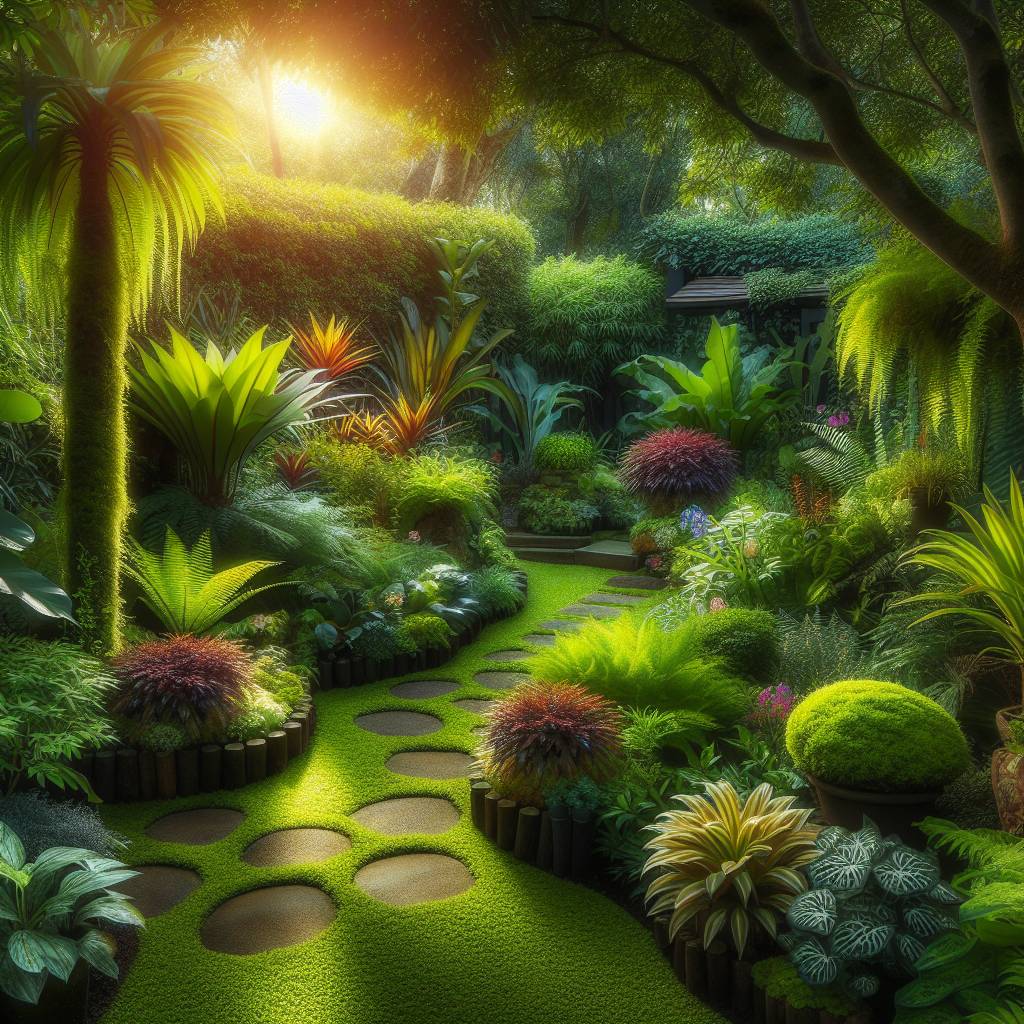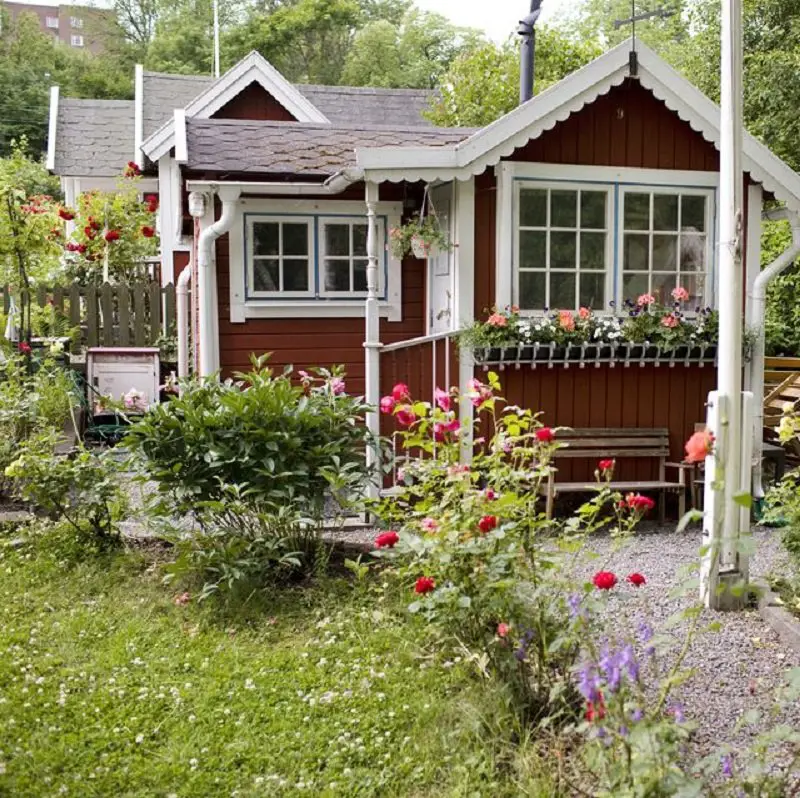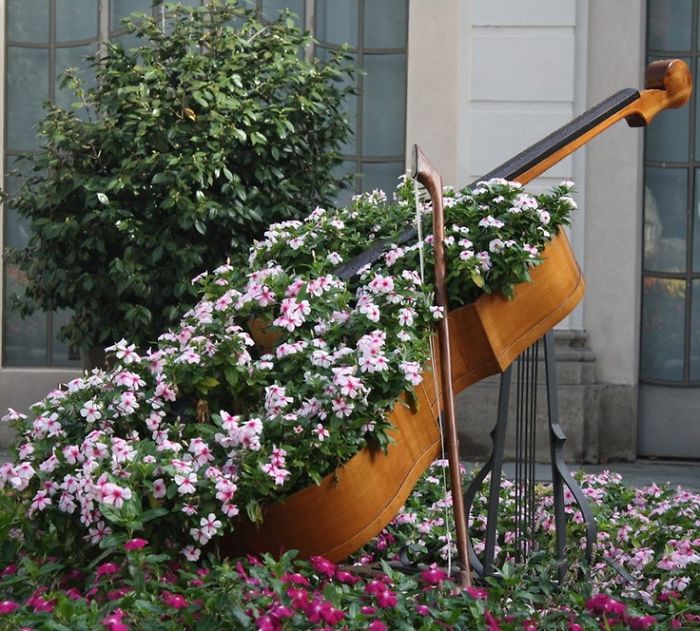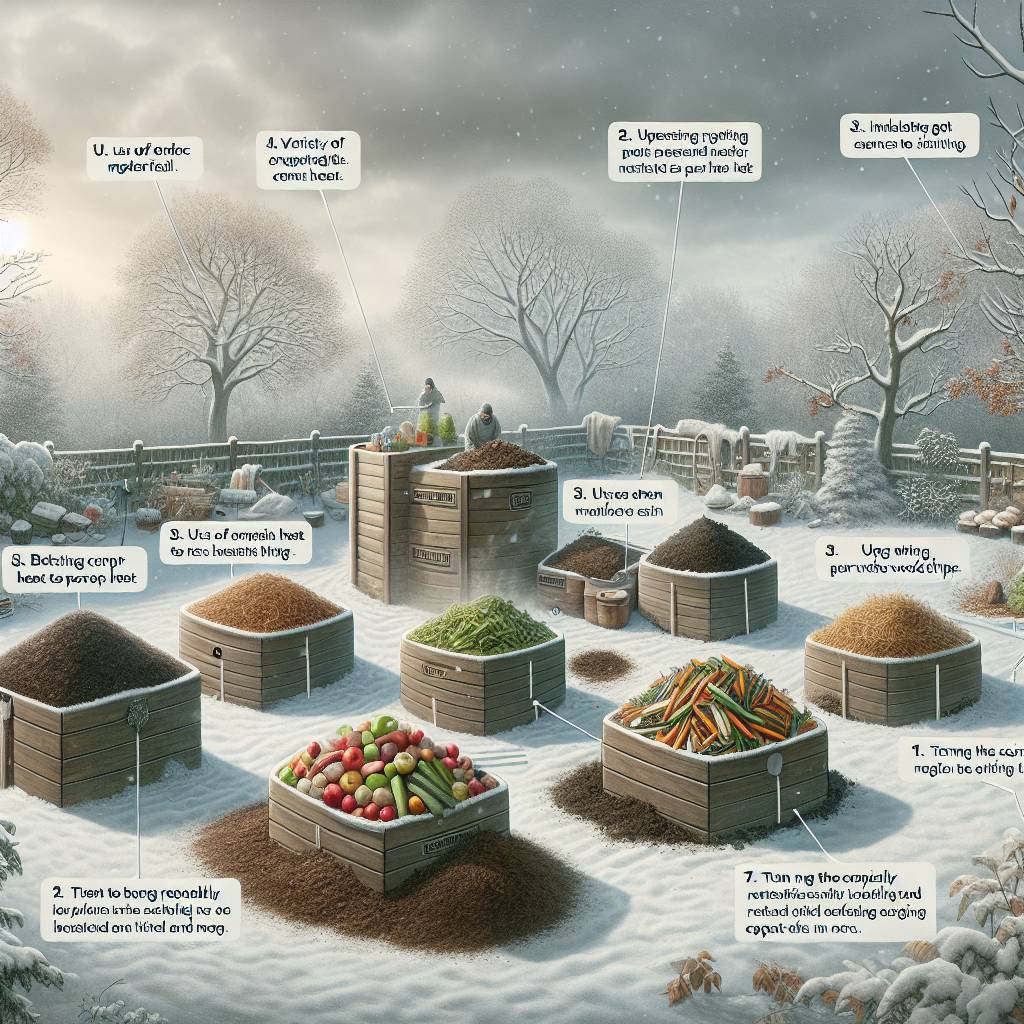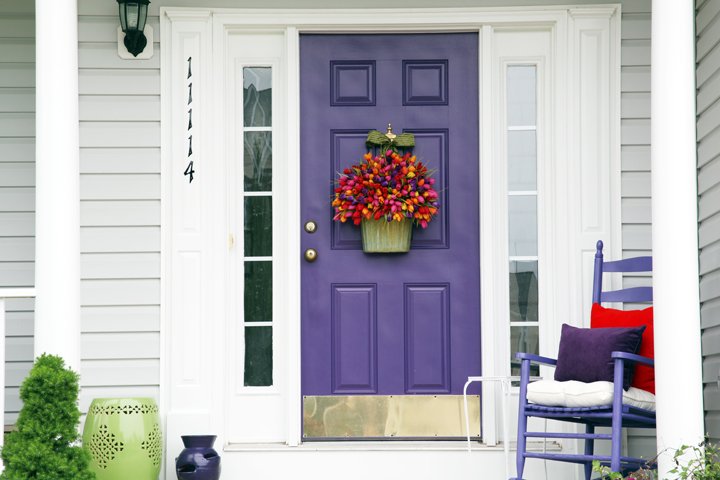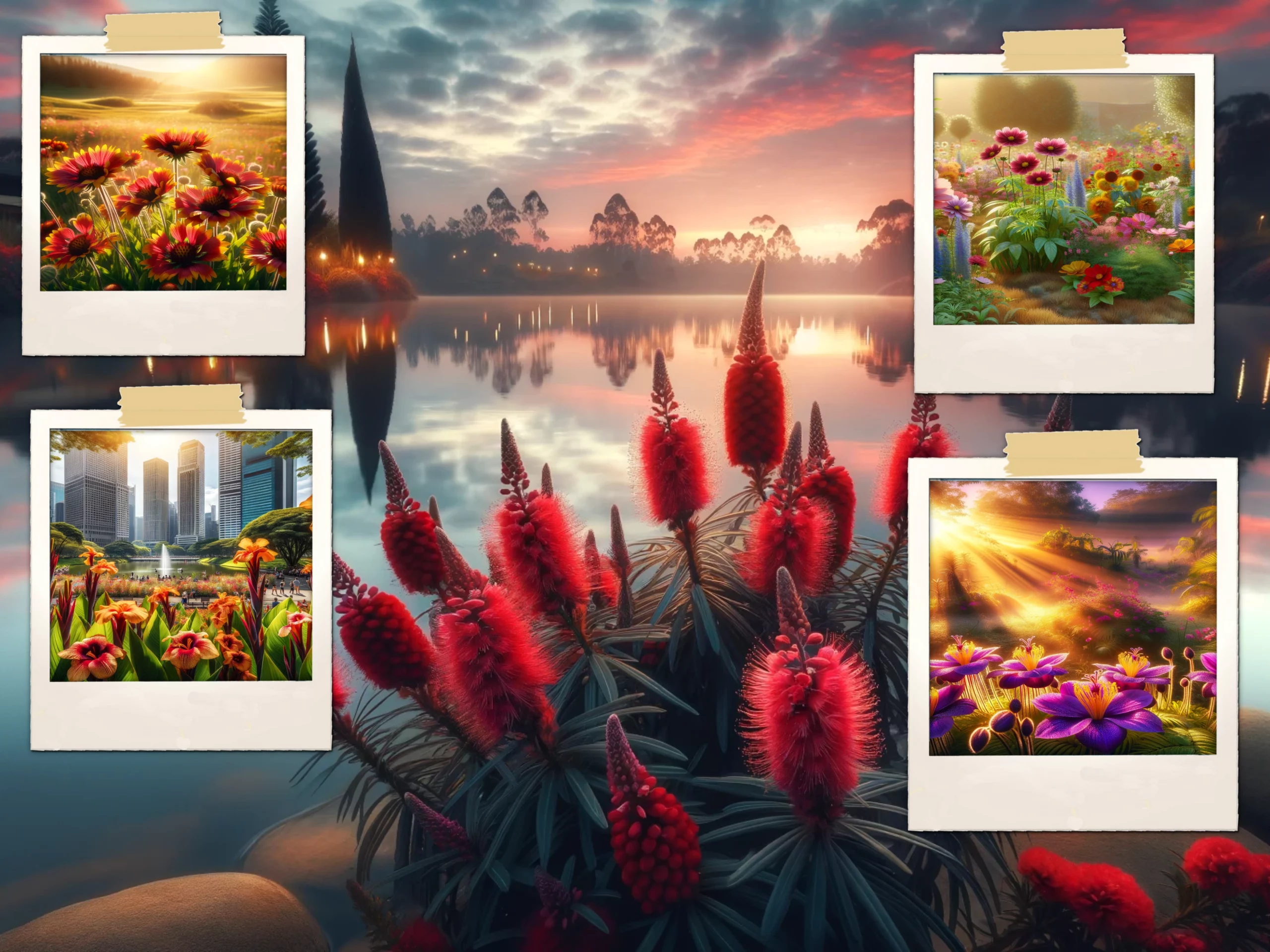In the realm of gardening, finding success with flower beds in shady spots can be a challenge. However, historical context reveals that gardeners have long grappled with this dilemma. Today, we delve into the world of flower gardening in shady areas, exploring tips and tricks to turn those dim corners into vibrant floral havens in full shade, partial shade, and deep shade.
Whether you’re a novice or seasoned gardener, understanding how to choose the right plants and optimize their growth is key. By embracing shade-loving blooms like hosta and fern, and strategic placement techniques, you can transform even the darkest nooks of your garden into flourishing displays of color and beauty. Join us as we uncover the secrets to thriving flower beds in shaded spaces.
Key Takeaways
- Choose the Right Plants: Select shade-loving plants that thrive in low-light conditions like hostas, ferns, and impatiens for a successful shady garden.
- Design with Purpose: Create a visually appealing shaded garden by incorporating different textures, heights, and colors to add depth and interest.
- Regular Maintenance: Ensure the health of your shade garden by regularly watering, mulching, and fertilizing to support plant growth and blooming.
- Explore Online Resources: Dive deeper into the world of shade gardening through online learning platforms offering courses and tips tailored to your specific needs.
- Create a Relaxing Space: Utilize shaded areas in your garden to craft a peaceful retreat with comfortable seating, soft lighting, and the soothing sound of water features.
- Adapt to Your Environment: Understand the level of shade in your garden to make informed plant choices and adjustments for optimal growth and beauty.
Understanding Shade
Shade Definitions
Shade in gardening refers to areas with limited direct sunlight, crucial for plant selection. Different shade levels include light, partial, and full shade. Knowing these definitions helps choose suitable plants.
Shade Types
Various types of shade like dappled, filtered, and deep affect plant growth differently due to varying light conditions. Identifying the specific type of shade in your garden aids in selecting appropriate plants.
Ideal Conditions for Shade Gardens
Planting Zones
Understanding your planting zone is crucial for successful flower gardening in shady areas. Different regions have varying temperature ranges and weather conditions that directly impact plant growth. By consulting a USDA hardiness zone map, you can identify which woodland plants are best suited for your specific area. This ensures that the plants you choose will thrive in the conditions of your shade garden.
When selecting plants for a shaded garden, it’s essential to consider their height and spread. Taller plants add vertical interest to the garden, while shorter ones fill out the lower layers, creating a visually appealing landscape. Understanding the growth habits of different plants helps ensure they have enough space to grow without overcrowding each other. Proper spacing allows each plant to receive adequate sunlight and nutrients for healthy development.
Architectural Elements
Incorporating architectural elements into your shady garden design can elevate its aesthetic appeal and functionality. Features like trellises or pergolas not only provide structure but also offer support for climbing plants such as vines or ivy. These elements can create shaded seating areas where you can relax and enjoy the beauty of your garden oasis. By integrating architectural features, you enhance both the visual appeal and usability of your shade garden.
Popular Shade-Loving Plants
Perennials
Perennials, plants that live for more than two years and return each growing season, are excellent choices for flower gardening in shady areas. Hostas, ferns, and astilbes are popular perennials that thrive in the shade. Opting for perennial plants ensures your shady garden remains beautiful year after year. These plants require minimal maintenance once established and offer a consistent source of greenery and blooms.
When planning your shade garden, consider incorporating a variety of perennials to create depth and interest. For example, hostas with their diverse foliage colors can complement the delicate flowers of astilbes beautifully. Ferns add a touch of elegance with their feathery fronds. By combining different types of perennials, you can achieve an aesthetically pleasing and dynamic garden design that evolves throughout the seasons.
Pros:
- Low maintenance once established
- Provide continuous beauty in shady areas
- Offer various textures and colors to enhance garden aesthetics
Cons:
- May require dividing or thinning out over time
- Some varieties may be deer magnets
Annuals
Annual flowers complete their life cycle within one growing season; hence they need replanting every year in shady gardens. Impatiens, begonias, and coleus are popular annuals known for thriving in shaded environments. Incorporating annuals into your shade garden introduces bursts of seasonal color and diversity to offset the predominantly green backdrop provided by shade-loving perennials.
For a vibrant display all summer long, intersperse annual flowers among your perennial beds or plant them in containers strategically placed around your shaded outdoor space. The bright hues from impatiens or begonias juxtaposed against the lush greens from hostas create striking visual appeal even in low-light conditions.
Best Flowers for Shady Areas
Perennial Flowers
Perennial flowers are excellent choices for shady areas, offering a range of colors throughout the year. Shade-loving perennial flowers, such as bleeding hearts, columbines, and hellebores, thrive in low-light conditions. By planting a mix of these perennials in your garden, you can enjoy blooms continuously. These plants require less maintenance once established.
When planning your shaded garden bed with perennial flowers, consider the varying bloom times to ensure continuous color displays. Mixing different varieties like astilbes and hostas can create an aesthetically pleasing contrast in foliage textures and flower shapes.
Pros:
- Low maintenance
- Continuous blooms
Cons:
- May require occasional dividing
Annual Flowers
Annual flowers are another great option to add pops of color to shady spots due to their vibrant hues. Impatiens, begonias, and pansies are popular choices that thrive well under trees or on covered patios where sunlight is limited. These plants provide a temporary burst of color that complements the more permanent fixtures in your garden.
To keep annuals flourishing throughout the season in shady areas, make sure they receive adequate watering without being waterlogged since excess moisture can lead to root rot.
- Choose shade-tolerant annuals like fuchsias or coleus.
- Ensure proper soil drainage by amending it with organic matter.
Flowering Shrubs
Flowering shrubs not only bring height variation but also structural interest to shaded landscapes while producing stunning blossoms. Shade-tolerant flowering shrubs like azaleas, hydrangeas, and rhododendrons offer long-lasting beauty with minimal care requirements once established.
Incorporating flowering shrubs strategically around tree bases or along fences can enhance the overall aesthetics of your shaded garden area while providing habitat for birds and pollinators.
- Key Information:
- Provide structure and height variation
Garden Design and Aesthetics
Color in Shade
When creating a flower gardening in shady areas, it’s crucial to think about adding color to brighten up the space. Plants like heucheras, hostas, and coleus come in various vibrant hues that can add visual interest to your garden. By incorporating these colorful foliage and flowers, you can create an eye-catching display even in the shade. Imagine how a mix of deep purples, bright greens, and rich reds can liven up a dark corner of your woodland garden.
To enhance the aesthetics of your shady garden further, consider adding art elements such as sculptures or decorative structures. These pieces can act as focal points or inject a sense of playfulness into your outdoor space. Picture how a strategically placed sculpture or an ornate trellis could elevate the overall design of your garden by providing visual interest and personality.
Garden Art Elements
In addition to plants and flowers, installing water features like fountains or ponds brings another dimension to your shaded outdoor oasis. The gentle sound of flowing water not only creates a calming atmosphere but also helps mask unwanted noise from outside sources. Imagine sitting amongst lush greenery while listening to the soothing trickle of water from a fountain – it adds an element of tranquility that complements the serene nature of a shaded gardeners‘ retreat.
Plant Selection for Shaded Gardens
Groundcovers
Groundcovers are essential in flower gardening in shady areas. They serve to cover the ground, preventing weed growth and adding a lush appearance to your garden. Shade-loving groundcovers like pachysandra, vinca, and ajuga are perfect choices for filling in bare spots under trees or shrubs. By using these plants, you can ensure that your shaded garden looks well-maintained and vibrant.
Incorporating groundcovers into your shady garden not only enhances its aesthetic appeal but also helps maintain the soil’s moisture content by reducing evaporation. These plants act as living mulch, protecting the soil from erosion while providing habitat for beneficial insects.
Vines
When planning a shady garden, consider including vines to add vertical interest and cover unsightly structures such as walls or fences. Shade-tolerant vines like clematis, ivy, and climbing hydrangea not only offer beauty but also provide additional shade coverage within your garden space. By incorporating vines into your shaded landscape design, you can create depth and dimension that elevate the overall look of your garden.
Vines play a crucial role in creating visual interest by softening hard structures with their cascading foliage while offering privacy when used to screen off certain areas of the yard.
Trees
Selecting suitable shade trees is paramount for successful flower gardening in shady areas. Trees like maples, oaks, and birches are excellent choices as they provide natural shade during hot summers while contributing to the ecosystem’s health through oxygen production and carbon sequestration. By planting trees strategically throughout your shaded garden space, you can create comfortable retreats where you can relax outdoors without direct exposure to harsh sunlight.
Apart from offering shade benefits, trees also attract wildlife such as birds and insects that contribute to pollination activities within your garden environment.
Creating a Tranquil Retreat
Tranquil Spaces
Creating tranquil spaces in shady gardens is essential for relaxation and contemplation. Imagine adding comfortable seating areas under a canopy of trees, a cozy hammock gently swaying in the breeze, or a serene meditation spot surrounded by lush greenery. These elements invite you to unwind and enjoy peaceful moments amidst the beauty of your garden. By incorporating these features, you elevate the overall experience of your shaded outdoor retreat, providing a sanctuary where you can escape from the hustle and bustle of everyday life.
In addition to plants, hardscape elements play a crucial role in shaping the ambiance of shady gardens. Pathways meandering through dappled sunlight, patios bathed in filtered light, or retaining walls embracing shade-loving flora all contribute to creating structure and functionality within your garden oasis. Utilizing materials like natural stone for rustic charm, brick for timeless elegance, or wood for warmth enhances the woodland setting’s natural beauty while providing defined spaces that improve accessibility throughout your shade garden. Integrating these hardscape elements not only adds visual interest but also ensures that every corner of your tranquil retreat is both beautiful and practical.
Plant Combinations
Plant combinations are key to achieving visual harmony and interest. Picture tall ferns gracefully towering over delicate hostas nestled at their feet or vibrant coral bells contrasting against deep green foliage—these thoughtful pairings create captivating vignettes that draw the eye into different corners of your woodland-inspired haven. Experimenting with various plant combinations allows you to unleash your creativity and infuse personality into your landscape design by playing with textures, heights, colors – transforming each nook into an artistic expression unique to you.
Maintenance and Care
Large-Scale Planting
Large-scale planting can transform a dull space into a vibrant oasis. By grouping shade-loving plants like astilbes, ligularias, or hostas together, you create an abundant and cohesive appearance. This technique ensures that your garden looks visually stunning and well put-together.
Implementing large-scale planting techniques is vital for achieving a lush and full garden design in shaded areas. By incorporating masses of plants strategically, you can fill out the space effectively while creating a harmonious environment. For example, arranging different plant varieties with varying heights adds depth and texture to the garden landscape.
- Grouping shade-loving plants creates cohesion
- Mass planting ensures visual impact
- Different plant heights add depth to the garden
Attention to Shapes
In shady gardens, paying attention to the shapes of plants plays a crucial role in maintaining balance and harmony. Combining flora with diverse growth habits like mounding or upright forms enhances visual appeal by adding interest to the landscape. Mixing various plant shapes contributes significantly to creating an aesthetically pleasing outdoor space.
Harmonizing different plant shapes helps create a balanced composition within your shaded garden area. The combination of mounding plants with taller upright ones adds dimension and structure while ensuring that each type complements the others effectively. This approach results in a visually appealing arrangement that captures attention effortlessly.
Online Learning Resources
Gardening Courses
Enrolling in gardening courses is a fantastic way to expand your knowledge and skills for successful flower gardening in shady areas. Whether you opt for online classes or local workshops, these courses offer valuable guidance on selecting the right plants, mastering care techniques, and understanding design principles specifically tailored for shade gardens. By taking gardening courses, you not only enhance your expertise but also boost your confidence in creating stunning shady garden spaces.
Gardening blogs are another goldmine of information. These blogs are filled with inspiration, tips, and advice shared by seasoned gardeners who have mastered the art of cultivating beautiful shade gardens. They often feature plant recommendations that thrive in low-light conditions, creative design ideas to make the most out of shaded spots, as well as troubleshooting solutions for common issues faced by shade garden enthusiasts. Following reputable gardening blogs ensures that you stay up-to-date with the latest trends and innovative techniques within the realm of shade gardening.
Final Remarks
So, you’ve got the lowdown on creating a stunning shady garden oasis. From understanding shade levels to picking the perfect plants and designing a tranquil retreat, you’re all set to transform that shady spot into a lush paradise. Remember, it’s all about finding the right balance of light and shade for your green buddies to thrive. Keep up with maintenance, and your garden will be the envy of the neighborhood!
Now, grab your gardening tools and get your hands dirty. Dive into the world of shade gardening with confidence, knowing you have all the know-how to make it a blooming success! Your shady garden adventure awaits!
Frequently Asked Questions
Can I grow flowers in shady areas?
Yes, you can! There are plenty of beautiful flowers that thrive in shaded spots. Look for shade-loving plants like impatiens, begonias, and hostas to add color and life to your shady garden.
What are some popular shade-loving plants for a garden?
Popular choices for shady gardens include ferns, astilbes, heucheras, and bleeding hearts. These plants not only tolerate shade but also bring texture and color diversity to your garden beds.
How can I design an aesthetically pleasing shaded garden?
Incorporate different plant heights and textures to create visual interest. Mix colorful foliage with varying bloom times for continuous beauty. Consider adding elements like rocks or a birdbath to enhance the overall appeal of your shaded garden space.
What maintenance is required for a flower garden in shady areas?
Regular watering is crucial since shaded areas may retain moisture longer. Keep an eye out for pests common in moist environments. Prune dead foliage regularly to maintain the health and appearance of your shade-loving plants.
Are there online resources available for learning more about flower gardening in shady areas?
Absolutely! You can find a wealth of information on reputable gardening websites, blogs by horticulture experts, or even online courses dedicated to gardening in challenging conditions like shade. Explore these resources to expand your knowledge and skills as a gardener specializing in shaded landscapes.
